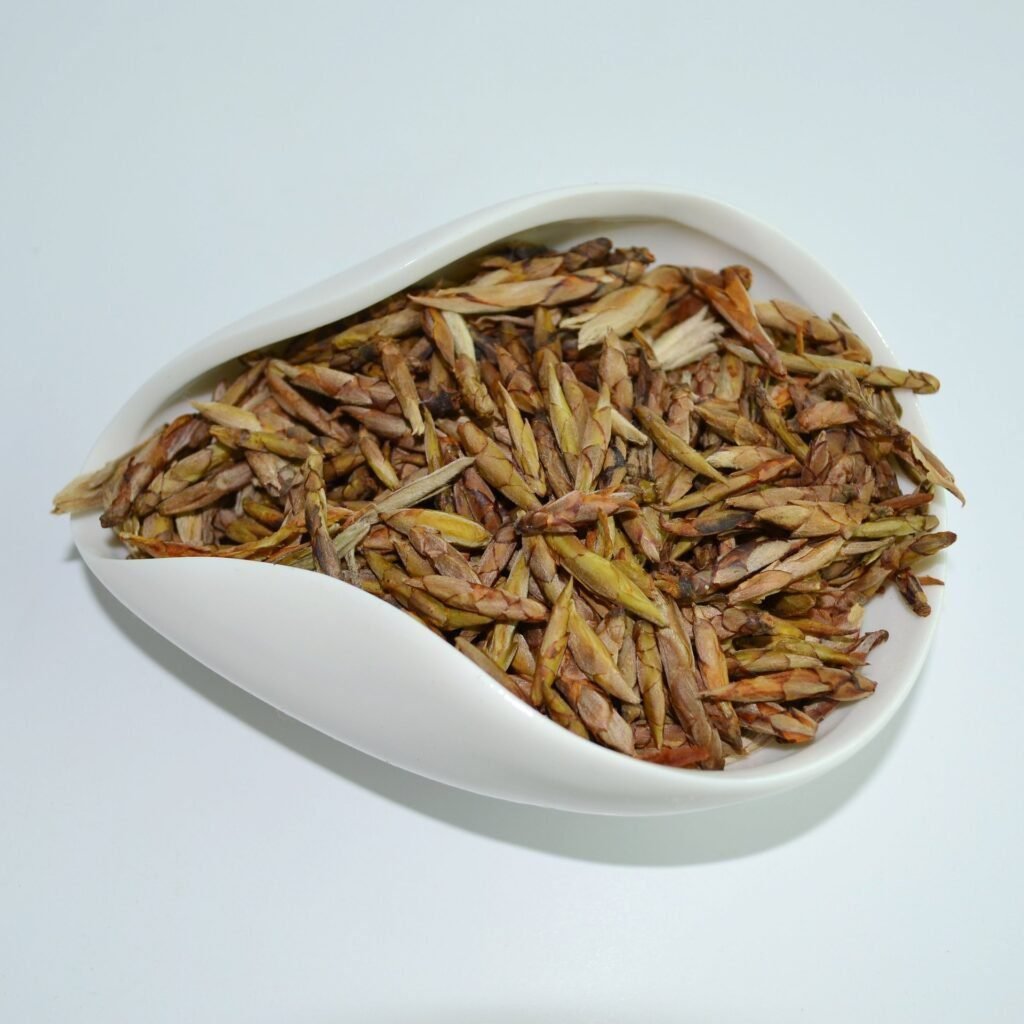Eagle tea, originating from deep mountains and forests, is a unique and flavorful beverage.

Its raw material is not traditional tea, but the tender leaves of the camphor family’s leopard skin camphor tree. Made through unique craftsmanship after harvesting. The dried tea strips are thick and sturdy, with a dark green color.
When brewing, boiling water is poured in, the tea leaves stretch out, and the aroma instantly spreads. That fragrance, with the freshness and simplicity of the mountains and forests, steady and long-lasting. The tea soup has a bright yellow color, a rich and mellow taste, a slight bitterness at first taste, and a sweet aftertaste in an instant, leaving an endless aftertaste.

In places such as Sichuan and Chongqing, eagle tea is a frequent guest in people’s daily lives, which can quench thirst and have the effects of clearing heat and relieving summer heat. It carries the local food culture and, in the passage of time, exudes a unique charm.
For more videos about Chinese tea, please refer to the video homepage of Hot pot and Tea。
Eagle tea
This Chinese tea also contains rich natural nutrients such as antioxidants and tea polyphenols
The brewing method of Eagle tea is different from other types of tea, mainly divided into two ways: brewing and boiling. When using the brewing method, we need to add tea leaves at a ratio of 1:50 and pour boiling water into the water. Many restaurants in Sichuan cook this type of tea for guests to drink, so local people have a unique love for this tea since childhood.
When using the boiling method, we need to first put the tea leaves in clean water, boil them over high heat, and then switch to low heat for two to three minutes. As for the storage of Eagle Tea, it only needs to follow the four principles of pressure prevention, moisture prevention, sealing, and refrigeration.



